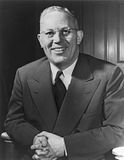
The 1944 United States presidential election was the 40th quadrennial presidential election. It was held on Tuesday, November 7, 1944. The election took place during World War II, which ended the following year. Incumbent Democratic President Franklin D. Roosevelt defeated Republican Thomas E. Dewey to win an unprecedented fourth term. It was also the fifth presidential election in which both major party candidates were registered in the same home state; the others have been in 1860, 1904, 1920, 1940, and 2016.

The 1948 United States presidential election was the 41st quadrennial presidential election. It was held on Tuesday, November 2, 1948. In one of the greatest election upsets in American history, incumbent Democratic President Harry S. Truman defeated heavily favored Republican New York Governor Thomas E. Dewey, and third-party candidates, becoming the third president to succeed to the presidency upon his predecessor's death and be elected to a full term.

The 1952 United States presidential election was the 42nd quadrennial presidential election. It was held on Tuesday, November 4, 1952. Republican Dwight D. Eisenhower defeated Democratic Illinois Governor Adlai Stevenson II in a landslide victory, becoming the first Republican president in 20 years. This was the first election since 1928 without an incumbent president on the ballot.
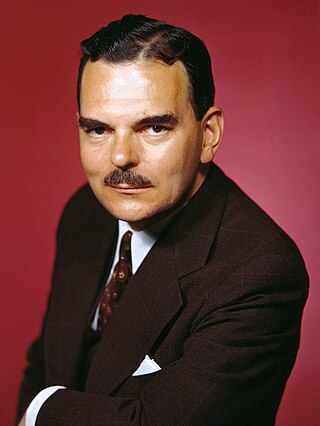
Thomas Edmund Dewey was an American lawyer and politician who served as the 47th governor of New York from 1943 to 1954. He was the Republican Party's nominee for president of the United States in 1944 and 1948, losing the latter to Harry S. Truman in a major upset. The 288 combined electoral votes Dewey received from both elections place him second behind William Jennings Bryan as the candidate with the most electoral votes who never acceded to the presidency.

Harold Edward Stassen was an American Republican Party politician, military officer, and attorney who was the 25th governor of Minnesota from 1939 to 1943. He was a leading candidate for the Republican nomination for president of the United States in 1948. Though he was considered for a time to be the front-runner, he lost the nomination to New York governor Thomas E. Dewey. He thereafter regularly continued to run for the presidency and other offices, such that his name became most identified with his status as a perennial candidate.

The 1952 Republican National Convention was held at the International Amphitheatre in Chicago, Illinois from July 7 to 11, 1952, and nominated Dwight D. Eisenhower of New York, nicknamed "Ike", for president and Richard M. Nixon of California for vice president.
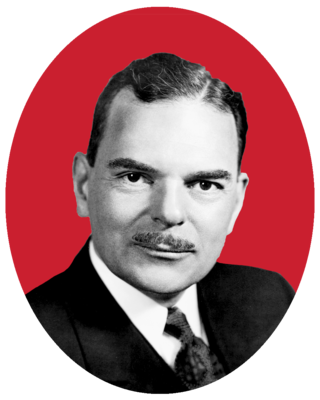
The 1948 Republican National Convention was held at the Municipal Auditorium, in Philadelphia, Pennsylvania, from June 21 to 25, 1948.
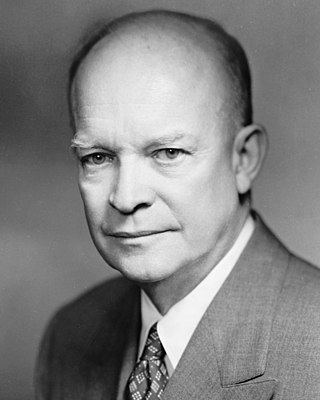
From March 11 to June 3, 1952, delegates were elected to the 1952 Republican National Convention.

From March 9 to June 1, 1948, voters of the Republican Party elected delegates to the 1948 Republican National Convention, in part to choose the party nominee for president in the 1948 United States presidential election.

Electoral history of Robert A. Taft, United States Senator from Ohio (1939–1953), United States Senate Majority Leader (1953) and a candidate for the 1940, 1948 and 1952 Republican presidential nominations.
The Dewey–Stassen debate was the first audio-recorded presidential debate in the United States. It featured New York Governor Thomas E. Dewey and former Minnesota Governor Harold Stassen discussing the legal status of the Communist Party of the United States four days before the 1948 Oregon Republican presidential primary. The debate was transmitted throughout the nation via radio broadcast, and is credited with helping Dewey win the primary and the nomination of his party. It is often cited as establishing the modern presidential debate standard.

The 1948 United States presidential election in New Jersey took place on November 2, 1948. All contemporary 48 states were part of the 1948 United States presidential election. Voters chose 16 electors to the Electoral College, which selected the president and vice president.

This article lists those who were potential candidates for the Republican nomination for Vice President of the United States in the 1960 election. After winning the Republican presidential nomination at the 1960 Republican National Convention, Vice President Richard Nixon needed to choose a running mate. President Dwight D. Eisenhower strongly supported UN Ambassador Henry Cabot Lodge Jr. Though Lodge lacked charisma as a campaigner, his foreign policy experience and stature as ambassador made him an appealing candidate. However, Lodge was unpopular with the Republican right, who did not want a Northeastern moderate on the ticket. Nixon also strongly considered conservative Minnesota Representative Walter Judd and moderate Kentucky Senator Thruston Morton. After a closed session with Republican Party leaders, Nixon announced his choice of Lodge. The Republican convention ratified Nixon's choice of Lodge. The Nixon–Lodge ticket lost the 1960 election to the Democratic ticket of Kennedy–Johnson.
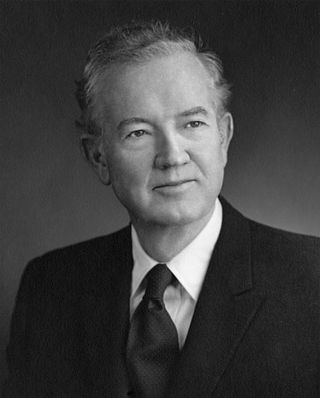
This article lists those who were potential candidates for the Democratic nomination for Vice President of the United States in the 1952 election. After winning the presidential nomination on the third ballot of the 1952 Democratic National Convention, Illinois Governor Adlai Stevenson consulted with Democratic Party leaders such as President Harry S. Truman and Speaker Sam Rayburn. Stevenson chose Alabama Senator John Sparkman, a Southern centrist, as his running mate. Sparkman won the vice presidential nomination on the first ballot as no serious rival tried to displace Stevenson's choice. However, many Northerners were not enthused with the choice of Sparkman due to Sparkman's stance on civil rights. During the 1952 convention, Sparkman, who had supported Senator Richard Russell for president, played a part in watering down the party's platform on civil rights. New York Representative Adam Clayton Powell Jr. and others walked out of the convention after the choice of Sparkman was announced. The Democratic ticket lost the 1952 election to the Republican ticket of Dwight D. Eisenhower and Richard Nixon.

This article lists those who were potential candidates for the Democratic nomination for Vice President of the United States in the 1948 election. At the 1948 Democratic National Convention, President Harry S. Truman won nomination for a full term. Truman had become president upon the death of his predecessor and 1944 running mate, Franklin D. Roosevelt. As the 25th Amendment had not yet been passed, there was no method for filling a vice presidential vacancy, and Truman served without a vice president during his first term. Truman's nomination faced significant opposition from the South, as did the party's platform on civil rights. Though Truman attempted to convince Supreme Court Justice William O. Douglas to join the ticket, Douglas declined. Truman instead selected Senate Minority Leader Alben W. Barkley, the preferred choice of many Democratic delegates, and a border state Senator who could appeal to both the Northern and Southern wings of the party. The Truman–Barkley ticket won the 1948 election, defeating the Republican (Dewey–Warren), Progressive (Wallace–Taylor), and Dixiecrat (Thurmond–Wright) tickets.

Senator Richard M. Nixon's speech at a state Republican Party fundraiser in New York City on May 8, 1952, impressed Governor Thomas E. Dewey, who was an Eisenhower supporter and had formed a pro-Eisenhower delegation from New York to attend the national convention. In a private meeting after the speech, Dewey suggested to Nixon that he would make a suitable vice presidential candidate on the ticket with Eisenhower.

This article lists those who were potential candidates for the Republican nomination for Vice President of the United States in the 1944 election. At the start of the 1944 Republican National Convention, New York Governor Thomas Dewey seemed like the likely presidential nominee, but his nomination was not assured due to strong support for Ohio Governor John W. Bricker and former Minnesota Governor Harold Stassen. Though Dewey wanted California Governor Earl Warren as his running mate, Warren was convinced that Franklin D. Roosevelt would win re-election, and refused to be anyone's running mate. Some Republicans wanted to ask Democratic Senator Harry Byrd of Virginia to be the Republican running mate in order to pursue the Southern vote, but this possibility was not seriously pursued. Dewey and his advisers instead worked out a deal in which Bricker's delegates voted for Dewey in the presidential ballot, and Dewey in return chose Bricker as his running mate. The Dewey–Bricker ticket, which balanced the moderate Northeastern and conservative Midwestern wings of the party, was ratified by the Republican convention. The ticket lost the 1944 presidential election to the Roosevelt–Truman ticket.
In his political career, between the years 1938 and 1994, Harold Stassen, a Republican, ran many campaigns for public office. He was elected governor of Minnesota three times, in 1938, 1940, and 1942.
